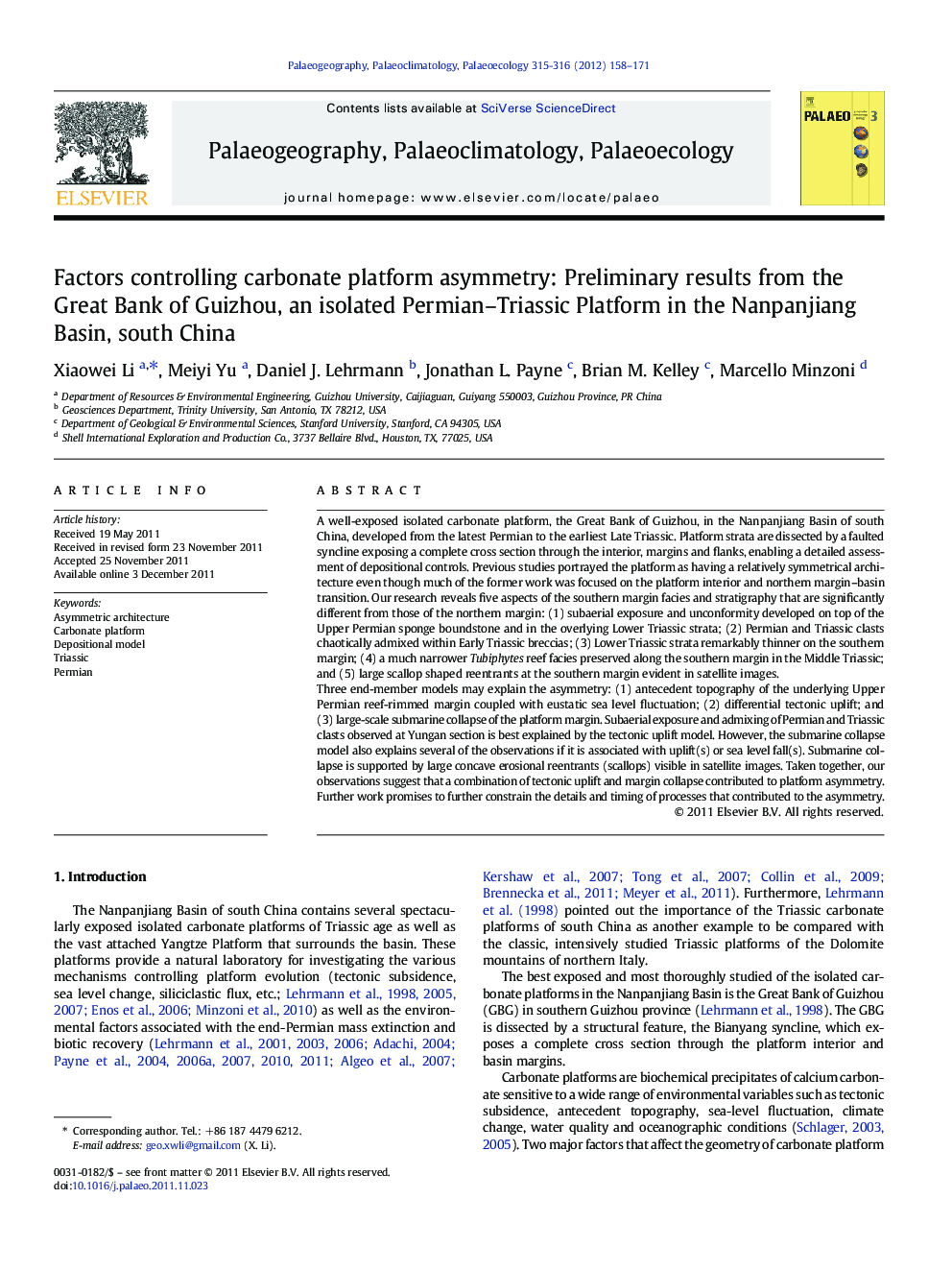| کد مقاله | کد نشریه | سال انتشار | مقاله انگلیسی | نسخه تمام متن |
|---|---|---|---|---|
| 4467056 | 1622241 | 2012 | 14 صفحه PDF | دانلود رایگان |

A well-exposed isolated carbonate platform, the Great Bank of Guizhou, in the Nanpanjiang Basin of south China, developed from the latest Permian to the earliest Late Triassic. Platform strata are dissected by a faulted syncline exposing a complete cross section through the interior, margins and flanks, enabling a detailed assessment of depositional controls. Previous studies portrayed the platform as having a relatively symmetrical architecture even though much of the former work was focused on the platform interior and northern margin–basin transition. Our research reveals five aspects of the southern margin facies and stratigraphy that are significantly different from those of the northern margin: (1) subaerial exposure and unconformity developed on top of the Upper Permian sponge boundstone and in the overlying Lower Triassic strata; (2) Permian and Triassic clasts chaotically admixed within Early Triassic breccias; (3) Lower Triassic strata remarkably thinner on the southern margin; (4) a much narrower Tubiphytes reef facies preserved along the southern margin in the Middle Triassic; and (5) large scallop shaped reentrants at the southern margin evident in satellite images.Three end-member models may explain the asymmetry: (1) antecedent topography of the underlying Upper Permian reef-rimmed margin coupled with eustatic sea level fluctuation; (2) differential tectonic uplift; and (3) large-scale submarine collapse of the platform margin. Subaerial exposure and admixing of Permian and Triassic clasts observed at Yungan section is best explained by the tectonic uplift model. However, the submarine collapse model also explains several of the observations if it is associated with uplift(s) or sea level fall(s). Submarine collapse is supported by large concave erosional reentrants (scallops) visible in satellite images. Taken together, our observations suggest that a combination of tectonic uplift and margin collapse contributed to platform asymmetry. Further work promises to further constrain the details and timing of processes that contributed to the asymmetry.
► Study reveals asymmetry in architecture of Triassic, Great Bank of Guizhou.
► Large amphitheater-shaped collapse structures (scallops) in margin.
► Models evaluated for controls on carbonate platform asymmetry.
► Antecedent topography, oceanographic affects, tectonics, and slope instability.
Journal: Palaeogeography, Palaeoclimatology, Palaeoecology - Volumes 315–316, 15 January 2012, Pages 158–171